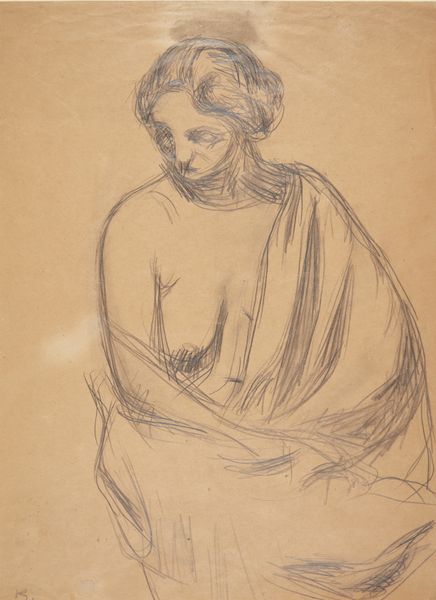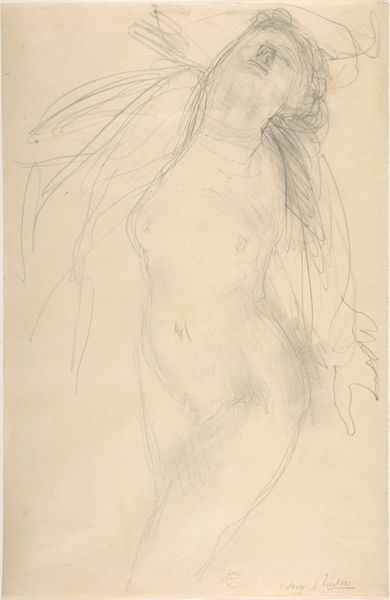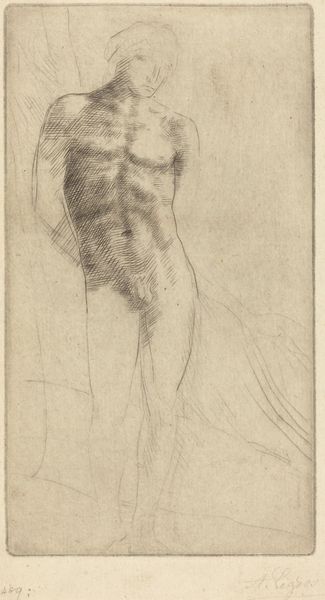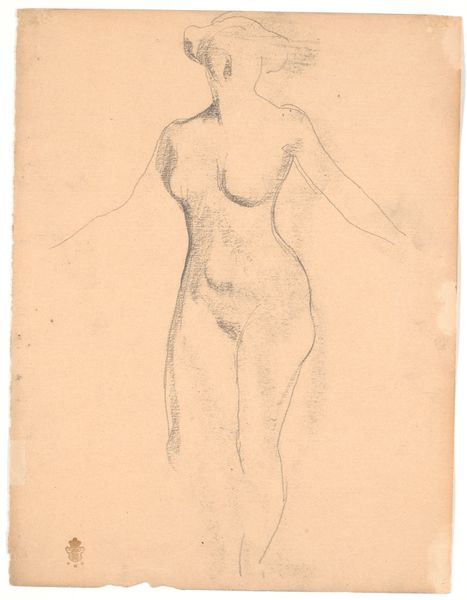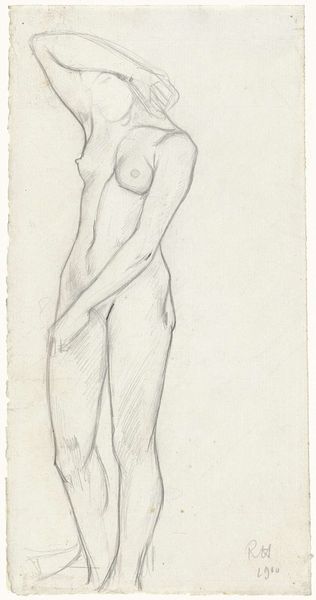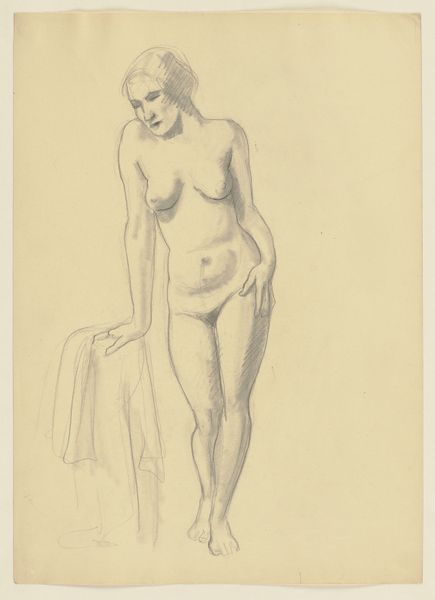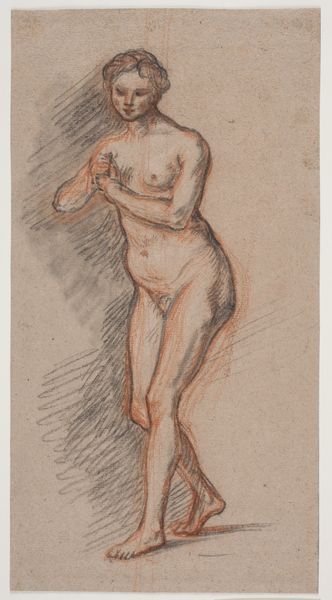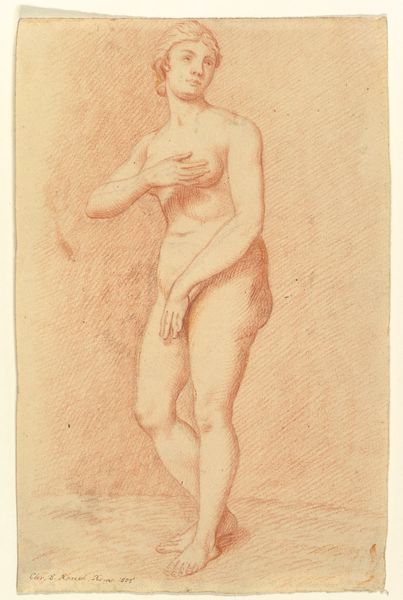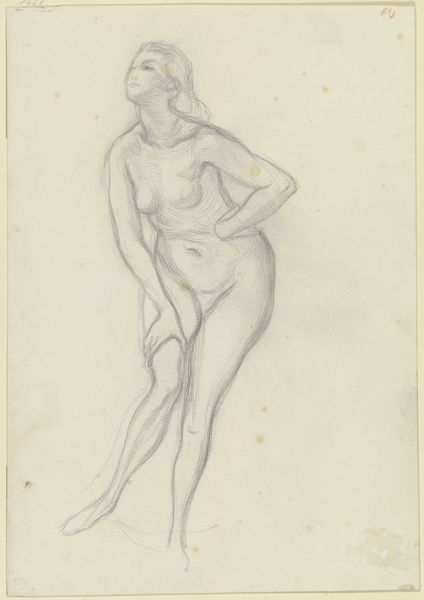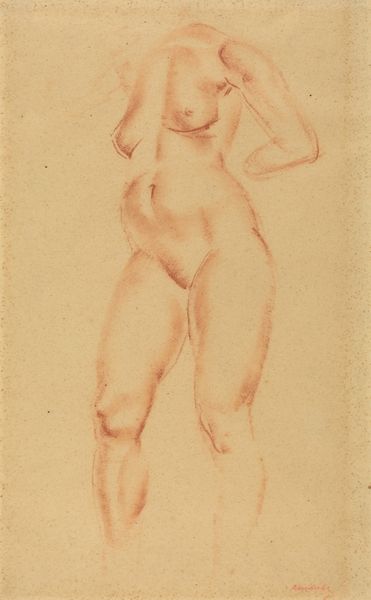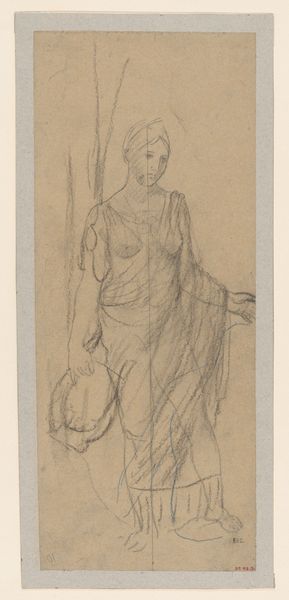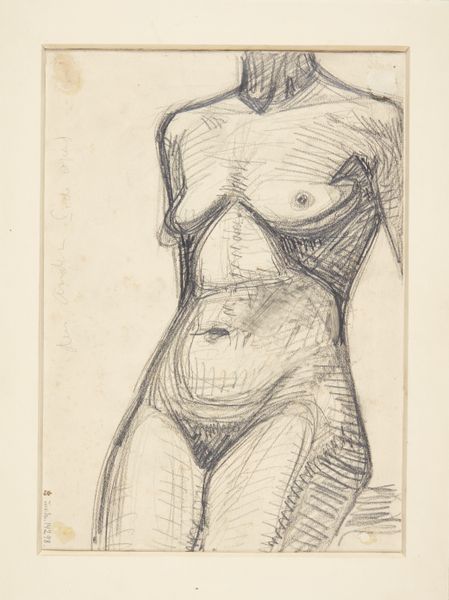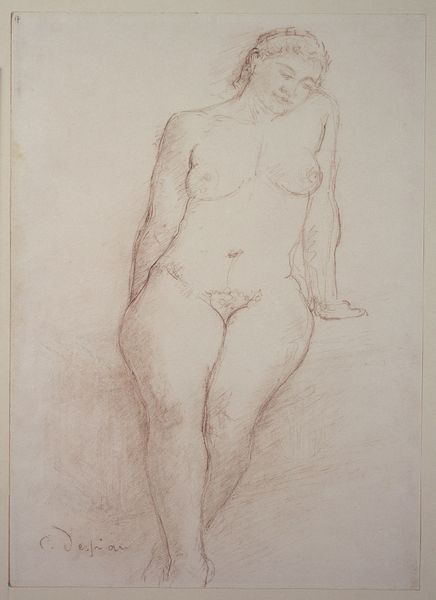
Kvindelig model, trekvart profil mod venstre, afskåret ved knæene, samt et lille modelstudie 1881 - 1927
0:00
0:00
drawing, pencil
#
portrait
#
drawing
#
pencil drawing
#
pencil
#
portrait drawing
#
nude
Dimensions: 499 mm (height) x 365 mm (width) (bladmaal)
Editor: This is "Kvindelig model, trekvart profil mod venstre, afskåret ved knæene, samt et lille modelstudie" by Harald Giersing. It was created sometime between 1881 and 1927, using pencil on paper. I am really intrigued by its raw style. It appears to be a simple nude study, but the rough lines convey such powerful emotion and motion! What can you tell me about the emotional impact of this study? Curator: I'm fascinated by the dual portrait--the presence of two female figures, the initial subject and the second ghosted in the background. This suggests an echo of the subject's self, a kind of doubling. Consider how cultures throughout history have portrayed doubling. How often does a "double" represent either a better self, or the dark side, of our identity? Editor: Wow, that’s not something I noticed at first glance, but it makes a lot of sense! Are there any particular recurring visual symbols that relate to this cultural idea of a "double" self that are mirrored here? Curator: While the specifics might be Giersing's personal style, the very act of duplication—that the same figure is seen twice in the same space—is telling. Note how one appears clearly, while the other is obscured, lurking almost. What is remembered clearly versus what lingers subconsciously in the ether of the past? How does the ethereal likeness reflect both memory, the process of remembering itself, and our perception of the ideal figure? It seems to embody an ongoing struggle in portraiture in general. Editor: I hadn't considered the implications of memory and past representation. That actually brings so much depth to a simple sketch. Curator: It prompts questions, doesn’t it? I think it reminds us that portraiture is never just about the face, but about history, psychology, and our perception. Editor: This exploration makes me want to discover more about these symbolic doubles. Thank you for your insights!
Comments
No comments
Be the first to comment and join the conversation on the ultimate creative platform.
